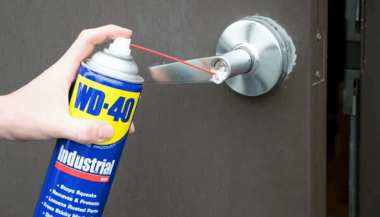When it comes to car keys, emergencies often strike at the worst possible moments. Whether you’re rushing to work, stuck at a grocery store, or stranded in an unfamiliar location, knowing how to handle these situations can save you time, stress, and money. Below are the five most common car key emergencies and practical solutions to get you back on track.
1. Locked Out of Your Car? Here’s What to Do
Locking your keys inside your car is a common yet frustrating mistake. The good news? There are ways to regain access without breaking the bank—or your window.
- Check for Spare Keys: If you have a spare key, now is the time to use it. Always keep one in a secure but accessible location, like with a trusted friend or at home.
- Use a Slim Jim or Unlocking Tool: While not ideal for everyone, these tools can work if you’re familiar with their use. However, be cautious to avoid damaging your car.
- Call a Locksmith or Roadside Assistance: Professional services can unlock your car safely and quickly. While it might cost you, it’s often cheaper than repairing a broken window.
Pro Tip: Many modern cars come with apps or key fobs that allow remote unlocking. Familiarize yourself with these features beforehand.
2. Key Stuck in the Ignition? Don’t Panic
A key stuck in the ignition can leave you feeling helpless, but with the right steps, you can often fix the issue yourself.
- Check the Gear Position: Ensure the car is in “Park” or “Neutral.” Many cars prevent key removal unless the gear is correctly positioned.
- Inspect for Steering Wheel Lock: Wiggle the steering wheel gently while trying to turn and remove the key. A locked steering wheel might be the culprit.
- Lubricate the Lock: Use a small amount of graphite lubricant to loosen the ignition lock. Avoid oil-based lubricants as they can attract dirt.
- Seek Professional Help: If the key is still stuck, call a locksmith or mechanic to prevent further damage.
3. Lost Your Key Fob Without a Spare? Act Fast
Losing your key fob with no backup can be a nightmare, especially if your car relies on it entirely.
- Contact a Locksmith: Many locksmiths can program a new key fob on the spot, often at a lower cost than going to a dealership.
- Order a Replacement: Some car manufacturers allow you to order a replacement key fob online. Be prepared to provide proof of ownership.
- Preventative Measures: Always have a spare key fob and store it in a safe location. Consider investing in a key tracker to avoid future mishaps.
4. Dealing with a Wet or Damaged Key Fob?
Accidents happen—maybe your key fob went through the wash or got drenched in the rain. The good news? Not all is lost.
- Dry It Out: Remove the battery and place the key fob in a bag of rice or silica gel to absorb moisture. Let it sit for at least 24 hours.
- Replace the Battery: Water damage can short-circuit the battery, so replace it with a new one after drying the fob.
- Test the Fob: After reassembling, check if the fob functions properly. If not, you may need to replace it or have it repaired by a professional.
5. Dead Key Fob Battery in a Remote Location?
A dead key fob battery can leave you stranded, but this issue is often easier to resolve than you might think.
- Check for Hidden Features: Many cars have an emergency key hidden in the fob itself. This can manually unlock the door.
- Push-Button Start Workaround: Some cars allow you to start the engine by holding the dead fob close to the start button.
- Carry a Spare Battery: Always keep a spare CR-type battery in your glove box for quick replacements. These are inexpensive and widely available.
Pro Tip: Familiarize yourself with your car’s manual to learn emergency procedures for dead key fobs.
General Tips to Prevent Car Key Emergencies
Preparation is your best defense against car key emergencies. Follow these tips to avoid getting caught off guard:
- Keep a Spare Key Handy: Store it at home, with a trusted person, or in a secure, hidden location.
- Invest in a Key Tracker: Attach a Bluetooth-enabled tracker to your key fob for easy location via your smartphone.
- Regular Maintenance: Replace key fob batteries proactively and inspect your keys for wear and tear.
- Learn Emergency Features: Understand your car’s built-in features, such as remote unlocking or hidden keys, to save time in emergencies.
Stay Prepared, Stay Calm
Car key emergencies don’t have to derail your day. With a little preparation and knowledge, you can tackle these common scenarios with confidence. Whether it’s unlocking your car, replacing a battery, or dealing with a damaged key fob, taking proactive measures ensures you’re always one step ahead.

 (1)_1736235862.jpg)
_1733227688.jpg)
 (1)_1737119311.jpg)
_1736346259.jpg)
